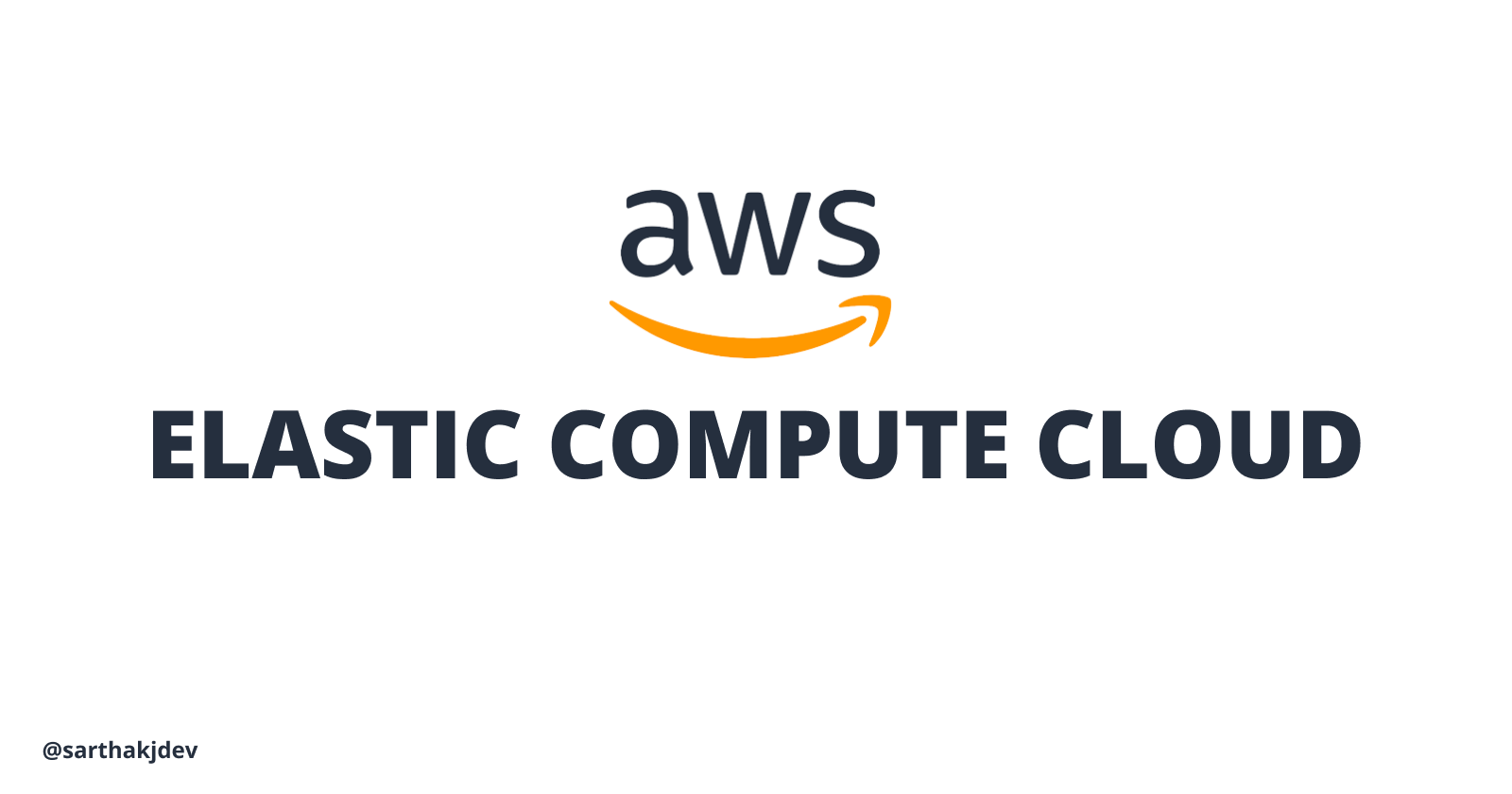Exploring AWS EC2 Instances: A Comprehensive Guide
 Sarthak Jain
Sarthak Jain
As a software developer with extensive experience in cloud computing and infrastructure management, I understand the importance of AWS EC2 (Elastic Compute Cloud) instances in modern application development and deployment. In this comprehensive guide, we'll dive deep into AWS EC2 and explore its key features, use cases, and best practices. Whether you're a seasoned developer or just getting started with AWS, this article will provide valuable insights into harnessing the power of EC2 instances effectively.
Introduction to AWS EC2
Amazon Elastic Compute Cloud (EC2) is a scalable cloud computing service that allows you to launch and manage virtual servers, known as instances, on the AWS cloud infrastructure. EC2 instances provide developers with the flexibility to run a wide range of applications, from simple web servers to complex, distributed applications.
Key Features of AWS EC2
Before we delve into the details, let's highlight some key features of AWS EC2:
Scalability: EC2 instances can be easily scaled up or down to accommodate varying workloads.
Instance Types: AWS offers a wide range of instance types optimized for various use cases, including compute-optimized, memory-optimized, and GPU instances.
Security: EC2 instances can be secured using AWS Identity and Access Management (IAM), security groups, and network access control lists (ACLs).
Operating System Flexibility: You can choose from various operating systems, including Amazon Linux, Windows, and custom AMIs (Amazon Machine Images).
Storage Options: AWS provides different storage options, such as Amazon EBS (Elastic Block Store) and instance store volumes, to meet your application's storage requirements.
Now, let's explore how to get started with AWS EC2 and create your first instance.
Creating Your First EC2 Instance
Step 1: Sign in to the AWS Management Console
To begin, log in to your AWS account using the AWS Management Console.
Step 2: Launch an EC2 Instance
Click on the "EC2" service from the AWS dashboard.
Select "Launch Instance" to start the instance creation process.
Choose an Amazon Machine Image (AMI) based on your application's requirements.
Select an instance type that matches your workload.
Configure instance details, including network settings, security groups, and storage.
Review and launch your instance.
Step 3: Connect to Your Instance
Once your instance is running, you can connect to it using SSH (for Linux) or Remote Desktop (for Windows). Make sure to secure your instance by using key pairs and SSH access rules.
Best Practices for EC2
To make the most of AWS EC2, consider implementing these best practices:
Auto Scaling: Use Auto Scaling groups to automatically adjust the number of instances based on demand.
Instance Monitoring: Enable CloudWatch monitoring to track the performance of your EC2 instances and set up alarms for critical metrics.
Security Hardening: Regularly update and patch your instances, and follow security best practices to protect against vulnerabilities.
Backup and Recovery: Create regular backups of your EBS volumes and implement disaster recovery strategies.
Use Cases for AWS EC2
AWS EC2 can be applied to various use cases, including:
Web Hosting: Host websites and web applications on EC2 instances with the desired server configurations.
Application Development: Use EC2 as a development and testing environment for building and deploying applications.
Data Processing: Run data processing tasks and analytics on scalable EC2 instances.
High-Performance Computing: Utilize GPU instances for machine learning and high-performance computing workloads.
Conclusion
In this comprehensive guide, we've explored the fundamentals of AWS EC2, from its key features to creating your first instance and best practices for effective usage. As a software developer, mastering EC2 is essential for harnessing the full potential of AWS cloud infrastructure in your projects.
AWS EC2 is a versatile and powerful service that can empower your applications with scalability, security, and reliability. By following best practices and leveraging EC2's capabilities, you can build and deploy applications that meet your business requirements seamlessly.
For more information and detailed documentation, please refer to the official AWS EC2 documentation.
Frequently Asked Questions (FAQs)
Q1: What is the pricing model for AWS EC2 instances?
AWS EC2 offers various pricing models, including On-Demand, Reserved Instances, and Spot Instances. The pricing depends on factors like instance type, region, and usage duration. You can find detailed pricing information on the AWS website.
Q2: Can I resize an EC2 instance after it's created?
Yes, you can resize an EC2 instance by stopping it, changing its instance type, and then starting it again. However, this process may result in some downtime, so plan accordingly.
Q3: How do I secure my EC2 instances?
You can enhance the security of your EC2 instances by configuring security groups, setting up IAM roles, regularly patching and updating your instances, and implementing network security measures.
Q4: What is the difference between EBS and instance store volumes?
EBS (Elastic Block Store) volumes are network-attached storage devices that persist independently of the EC2 instance's lifecycle. In contrast, instance store volumes are temporary, ephemeral storage that is physically attached to the host computer. EBS volumes are suitable for data that needs to persist, while instance store volumes are ideal for temporary data and caching.
Q5: Can I use AWS EC2 for Windows-based applications?
Yes, AWS EC2 supports Windows-based instances, allowing you to run Windows Server and various Windows-based applications on the cloud.
Subscribe to my newsletter
Read articles from Sarthak Jain directly inside your inbox. Subscribe to the newsletter, and don't miss out.
Written by

Sarthak Jain
Sarthak Jain
Hello, I'm a freelancer specializing in Node.js (Typescript) and React development, backed by strong DevOps expertise. I'm here to transform your ideas into real technological solutions, so feel free to reach out via DMs. My passion lies in various aspects of the development process, including setting up development environments, creating deployment pipelines, and constructing cloud infrastructures. Feel free to get in touch, and let's discuss how I can help bring your projects to life!